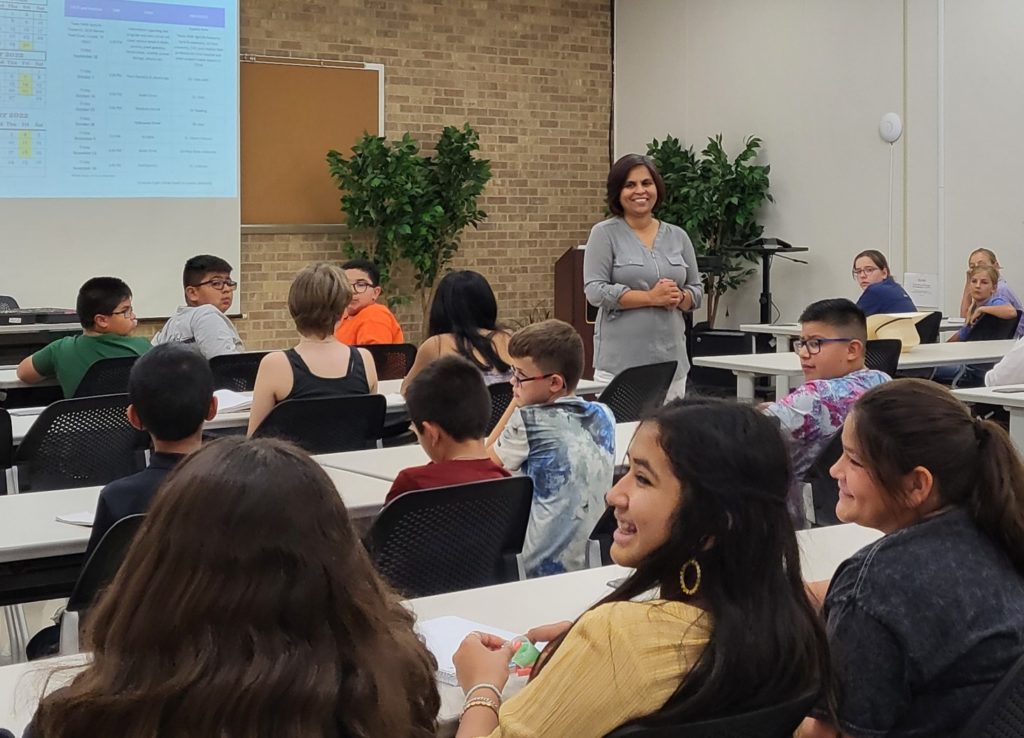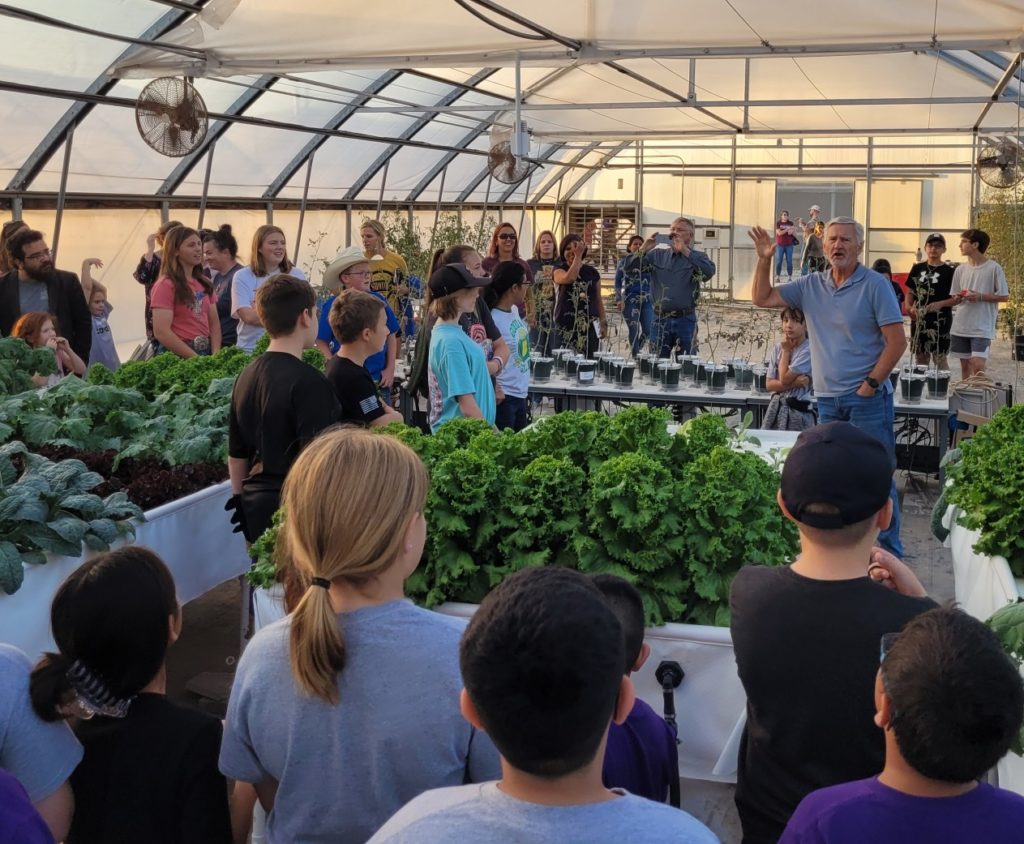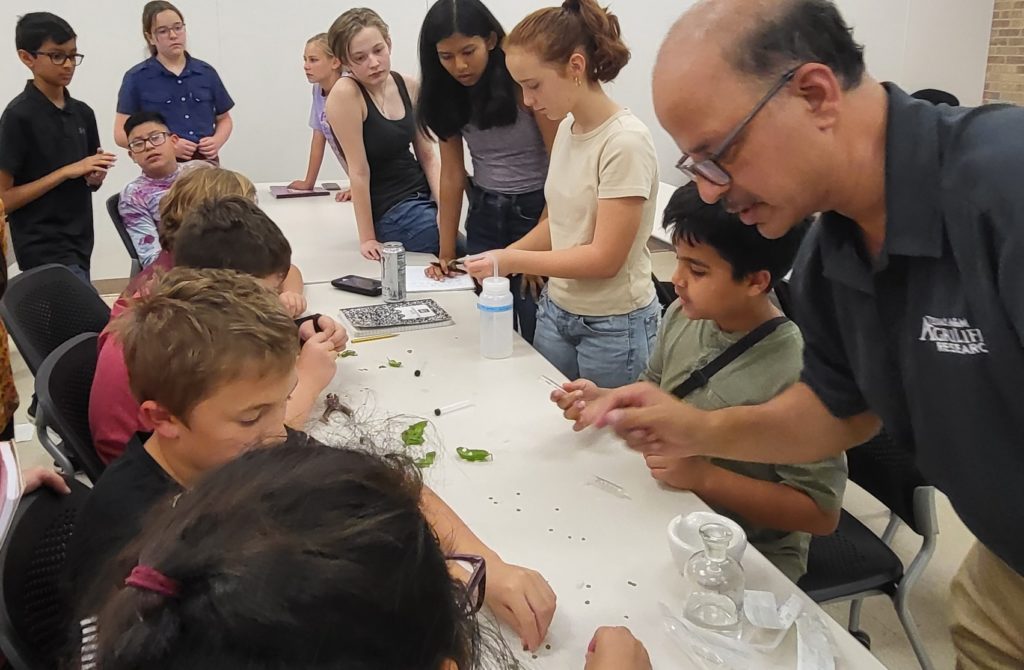New 4-H program in Uvalde focuses on STEM learning
Texas A&M AgriLife center provides unique education for youth interested in science, technology, engineering, math
For more than a year, Madhumita and Vijay Joshi, both Texas A&M AgriLife Research scientists based in the Texas A&M AgriLife Research and Extension Center in Uvalde, have led efforts to bring science, technology, engineering and mathematics, STEM, learning to students in Uvalde and surrounding communities.

“Although the Texas 4-H program administered by the Texas A&M AgriLife Extension Service addresses a number of activities relevant to community interests, we realized that kids interested in science and technology had limited avenues for STEM learning,” said Madhumita Joshi, Ph.D., a research associate in the center’s Phytonutrient Lab.
To help fill that need, the couple began investigating how to provide STEM learning opportunities at the Texas A&M AgriLife center.
The Joshis were ultimate;y able to implement the STEM program thanks to the support of center director Daniel Leskovar, Ph.D., and Michael Haynes, district administrator for AgriLife Extension.
Additional support came from the AgriLife Extension 4-H team in Uvalde, which includes Noel Troxclair, Ph.D., agriculture and natural resources agent; Natalie Cervantes, 4-H and youth development specialist; and Molly Flores, family and community health and 4-H agent, as well as interested parents, teachers and administrators in area schools.
While the program focuses on older students, students from ages 8-18 can participate.
“The ultimate goal is to motivate and inspire students, boost their interest in science and use the program to share relevant information with parents and schools,” said Vijay Joshi, an AgriLife Research plant systems physiologist and associate professor in the Texas A&M Department of Horticultural Sciences.
How the STEM initiative began
The Joshis brought the idea forward once they felt there was a framework for implementing the program and sufficient stakeholder support.

“We first ran the idea of offering a STEM learning program past our AgriLife Research and AgriLife Extension faculty at the Uvalde center, and everyone unconditionally offered to help,” said Vijay Joshi. “We soon teamed up with Michael Ortiz at Sul Ross State University, who immediately joined the effort by adding a math circle. We also had several community members who were experts in different fields of science and technology who welcomed and greed to participate in the effort.”
In September, an informational session was held at the center for interested parents. They were told students from Uvalde and throughout the county would be given the opportunity to come to the center on Fridays for STEM learning.
“We’re excited to offer the program through Texas 4-H, as that is the youth development component of AgriLife Extension,” explained Haynes. “In a number of other counties, we have seen STEM programs flourish, and we are glad that we now have this program for Uvalde County. This program brings new opportunities for area 4-H students, and we welcome anyone interested in signing up for 4-H so they may get all the benefits of this new STEM program.”
Initially, the STEM programming is being offered every Friday, but the program will likely be offered twice a month beginning next year.
“We hope to present alternating topics in science and math circles,” Madhumita Joshi said. “And next year, we also hope to include a small research project for junior and high school students so they can get firsthand experience on devising and performing scientific research.”
The STEM sessions

“I am particularly excited to have our in-house experts from AgriLife Research and AgriLife Extension talk about their science-related programs with kids,” said Vijay Joshi. “Our entire center faculty is on board with the program, and there is some interesting research already taking place here that we can share with these young people.”
Some of the research being done at the center includes hydroponics, system plant physiology, plant breeding, cropping systems, wildlife disease ecology, vegetable improvement and more.
Vijay Joshi presented a hands-on session on photosynthesis, during which students participated in performing an experiment. During another STEM session, Ortiz showed students how it could be fun to utilize math in different ways. In his session, Jared Reading, M.D., a radiologist with Uvalde Memorial Hospital, used a human skeleton model and tote bag full of candy in his presentation on the science of x-rays, as well as played bingo with the names of human bones.
Upcoming STEM programming at the center will include various fields of ongoing research such as wildlife, entomology and hydroponics.
“We are working on making it a diverse program by involving subject matter experts from various fields in the STEM areas,” Madhumita Joshi said. “We also want to be able to tie in with other STEM learning activities available at or through Texas A&M.”
Vijay Joshi said he is especially keen on having more high school students involved in the research done at the Texas A&M AgriLife center in Uvalde.

The Joshis said during their time at Cornell University, they came across several programs that welcomed the participation of high school and undergraduate students on research projects.
“Our center faculty here could serve as instructors or mentors for kids interested in making a career in research, not only in plant biology but other science streams at Texas A&M or elsewhere,” Vijay Joshi said.
He said as the STEM learning initiative advances, they hope to involve more undergraduate students from Uvalde and nearby communities to participate in the center’s research through a structured program such as the Research Experiences for Undergraduates program of the National Science Foundation.
Benefits to teachers and students
“Being in a small town, it has been really great to have these STEM learning opportunities at the AgriLife center in Uvalde,” said Caryn Goggans, who teaches fifth and sixth grade at Uvalde Classical Academy. “The students not only get to learn about science but also get to interact with kids of different ages and make those interpersonal connections within the community.”
Goggans said she wished such STEM activities were available when her daughter Brinlee was attending school in Uvalde.

“My daughter was interested in science, but the only youth STEM education opportunities we knew about were on Saturdays at Texas A&M University in College Station,” Goggans said. “We were fortunate to be able to go to these, but many students were not. My daughter is now a freshman at Texas A&M studying biomedical engineering.”
She said her fifth- and sixth-grade students enjoy the STEM sessions, and in her other role as director of instruction for the school, she is hoping to bring additional students into the program.
Arin Joshi, a seventh grader at Knippa Independent School District and son of Vijay and Madhumita Joshi, is one of the many students benefitting from the program.
“Science is my favorite subject, and I really enjoy chemistry,” he said. “In class, we’re reading from a science book about how to perform scientific experiments. But in the STEM program, we get to actually conduct practical experiments and learn about research.”
He said he felt the exposure to STEM subjects at his age would not only help ready him for future studies, it would also lay a foundation for him to follow his dream of someday becoming a surgeon or physician.
Roxie Reading, a fifth grader at Knippa ISD, also enjoyed the hands-on learning aspect of the program.
“We got to do some experiments on plants, and that was fun,” she said. “It’s always more interesting when you can use your hands when you’re learning. I also learned a lot about plants and how you can grow them with just water and nutrients. That really surprised me.”
James Miller, a ninth grader at Knippa ISD, said he wanted to be involved in the STEM program because it touched on topics of interest to him.
“I’m interested in math and science and am thinking I might study engineering to become an engineer or architect, so the STEM program had a lot for me,” he said.
Miller said he felt what he was learning in the program would benefit him in not only his future studies but also in his chosen career.
“So far, I have learned about hydroponics, chlorophyll and photosynthesis, and the skeletal system,” he said. “I really enjoyed that we played bingo with bones. That made it even more fun and interesting.”
Miller and his sister Victoria, a fifth grader, and brother Elliott, a fourth grader, all joined their local 4-H club so they could take advantage of the STEM programming at the Texas A&M AgriLife center.
“We don’t really have any family connection with 4-H, but when we found out about the STEM program, we all decided we wanted to join,” he said


